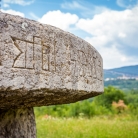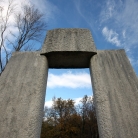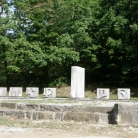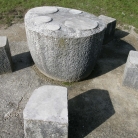The cradle of Glagolitic
The Glagolitic script is an ancient Slavic script, which was created at the beginning of ninth century and was used until the early 19 century when an increasing role was given to Latin alphabet. The Glagolitic alphabet was initially rounded, then squared and then had 32 characters. It has a numerical value so that the first nine letters are ones and the following nine letters are tens, further nine letters are hundreds and following nine letters are thousands.
The strongest bases of the Glagolitic are: Croatian Adriatic coast, Istria and the island of Krk, where the oldest stone monuments have been found, from the 12th and 13th century: Valunska tablet, Plomin inscription, Grdoselski and Supetar fragment and the Baška Tablet.
The Glagolitic script was compiled by Constantine Cyril. With it, the church books, town statutes and laws, carvings on the walls, carved messages on crucifixes, even on church bells, were written. Today it is a priceless heritage, the best preserved exactly in the central Istrian region.
The modern age has built a unique monument of Glagolitic culture and literacy - the Glagolitic Alley with eleven memorials which have been set up along the road between the small towns of Roč and Hum.
When you arrive in the area of Glagolitic, you'll be truly in the heart of Istria – in the geographical and spiritual sense. Take the unique opportunity to learn a few characters and write a postcard in this script to send it to your loved ones.
The school of Glagolitics in Roč is active during the summer. Croatian diplomats and politicians give Glagolitic and a tie as a souvenir.

















